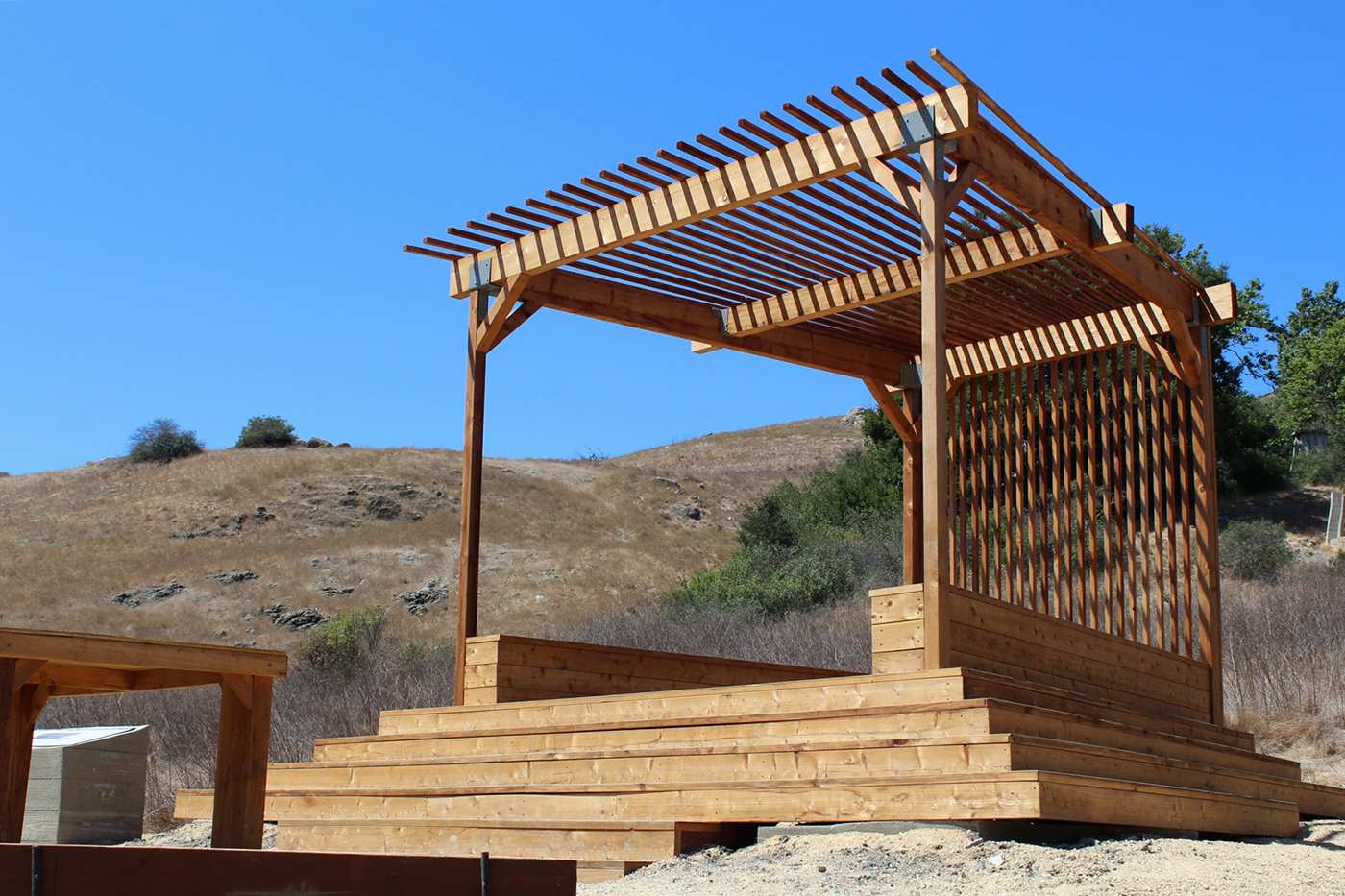The observation deck introduced to Cal Poly’s Architecture Graveyard in June 2019 is the first permanent addition in 15 years.
Abandoned structures blanket the hills of Poly Canyon, a hiking attraction located behind Cal Poly’s campus, for students and San Luis Obispo residents alike.
Two 2019 Cal Poly construction management graduates, Tony Pellegrini and Harrison Woods, built the Cal Poly Observation Deck for their senior project. The newly added observation deck addition, they said, aimed to revive the abandoned area and its image.
The main goals of the project are rest and revitalization, according to Pellegrini.
“At the top of the hill, it will give hikers and bikers a place to sit down, enjoy the view and rest,” Pellegrini said. “The bigger picture is to revitalize the movement of kids building up there, whether it be renovating or building something from the ground up.”
The deck was designed in 2017 by then-Mustangs Emir Kuljancic, Jordan Morofski and Sitora Vaxidova. A June 14 opening ceremony debuted the redwood lumber structure after two months of construction.
Poly Canyon is a “problem solving arena,” according to Pellegrini.
“We knew the value of getting out there and want to encourage the next generation of students to take on projects [in Poly Canyon],” Pelligrini said. “When you’re a student, you know enough about building to get by, but getting out there and having to push through and problem solve puts that to the test.”
The space was not always known as a graveyard.
In 1963, architecture students began building in the hills behind campus. More than 20 student-built structures dotted Poly Canyon until student caretakers who lived on-site moved out due to budget cuts and infrastructure issues in 2011, according to Kevin Dong, Cal Poly’s administrative associate dean for architecture.
It was not long before the structures fell prey to vandalism and weather damage. The canyon soon earned the nickname “architecture graveyard.”
Poly Canyon was originally designated to “show off Cal Poly student projects and provide a location for large scale experimental structures,” created by the first dean of Cal Poly’s College of Architecture and Environmental Design, according to the Cal Poly website.
As the site evolved, architecture students and faculty encouraged the community to refer to the space as Poly Canyon in an attempt to move away from an image of decay. In the past five years, Dong said, Cal Poly has attempted to reignite student interest in the Canyon.
Attempts to breathe new life into Poly Canyon include spreading awareness of the structures to freshmen students, alumni and community members. Since 2014, the Canyon Days Committee dedicated themselves to the task of reviving the canyon. The student volunteer group removes vandalism, repairs structures and refreshes landscaping each year.
“People thought nothing was happening out there and buildings were left out to die,” Dong said. “Students liven the space with their presence, transforming it from graveyard to sanctuary.”

